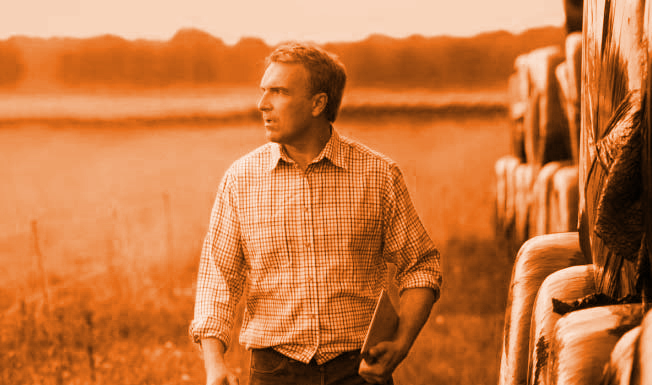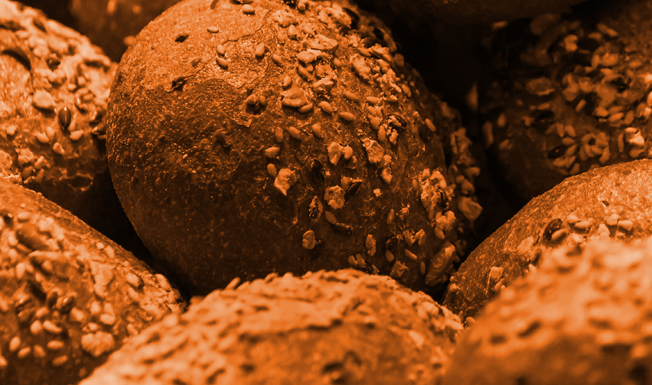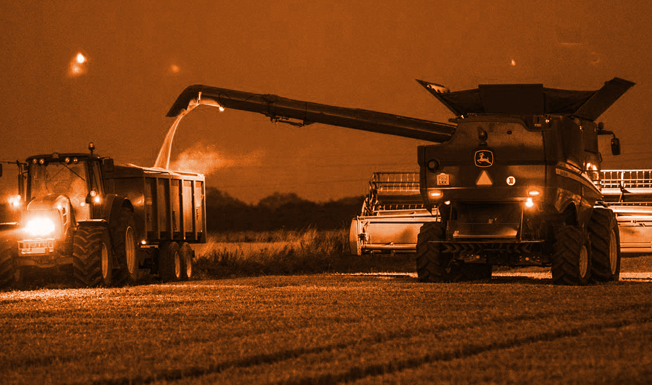Better buying, better selling – Lessons learned are hard won
This year in particular, farmers will be facing a tough choice on OSR.
By Tom Allen-Stevens, editor of CPM Magazine
Whether you grow oilseed rape for next harvest may depend on how badly you were burnt by the crop this year. Lee Bennett, Openfield’s head of seeds business, is keen to see that growers dress the wound properly and put their scars into perspective when considering what to put into the ground for harvest 2020.
“How deep is the wound?” he asks. “Some growers were singed, while others suffered first degree burns. But even in the absence of cabbage stem flea beetle last autumn, many crops were put into a seedbed with insufficient moisture. Some of the deepest wounds were suffered by those who had a good crop before Christmas, just to see it destroyed by CSFB larvae in the spring – could this have been avoided?”
Lee freely admits that OSR is a crop in which he has a strong interest and he’s also keen to share the knowledge and resources Openfield has with the 6000 farmers in total with whom the co-op does business. As the largest farmer-owned co-operative, referred to as a partnership, it sees itself as having a unique outlook on the industry, and a responsibility to its 4000 farmer members that goes beyond maximising shareholder value.
To Lee, that translates into providing an honest, but well informed opinion. “I’m not going to dress a pig up as a cow – I say it as I see it. But anything we do is well researched and technical before it’s commercial,” he continues.
“This year in particular, farmers will be facing a tough choice on OSR. The ultimate decision about whether to grow the crop will be up to them, but where we can help is to bring the knowledge and resource we have to ensure it’s a well informed choice. For those who stick with the crop, we can help with product choice and guidance, combined with a grower’s experience, to bring the best results next harvest.”
Lee prefers to start by looking at the overall market for OSR, combining knowledge from the seed-sales team with that of Openfield’s grain-marketing team. Senior OSR trader John Thorpe pegs the OSR area for 2019 harvest down 10%, compared with last year, at 505,000ha.
“That gives us a production of around 1.7M tonnes. Assuming domestic demand remains constant, there’ll be a deficit of 300,000t. The question is where that will come from,” he says.
“The EU crop is also estimated to fall, and globally everything in oilseeds is changing as a result of the ongoing trade war between China and the US. The EU will be looking to import 5M tonnes, and inward supplies from some countries are limited by GM issues.”
The volatility of sterling and continued uncertainty over Brexit further cloud the picture. “Chances are, the market for new crop will be tight, so one thing you can say about rapeseed is that it won’t struggle to find a home.”
The same can’t be said of OSR alternatives, with the market for both beans and oats fairly finite and easily pushed into oversupply. “Niche crops are called niche for a reason – the produce can be difficult to market, although if you’re determined to switch out of OSR, talk to us first about where the best opportunities lie,” advises John.
But it makes well established OSR the best chance of success with a break crop this autumn, and to achieve that, Lee points first to crop fundamentals. “Moisture is the absolute number one priority for your crop – seed has to be put into a soil with sufficient moisture, and that is likely to dictate the day on which you drill.”
For CSFB, it’s important to know your enemy, he says. “The larvae emerge as juvenile adults towards the end of June into the existing crop and after a spell of time spent grazing, they will then enter a period of enforced dormancy called aestivation. This is an essential phase in their lifecycle and is unaffected by any environmental conditions.
“Around the third week of Aug, they’ll reappear as full adults, ready to eat and looking to mate, and they’ll travel up to three miles to do so. This is when they migrate into crops, attracted by the volatiles emitted from the OSR plants’ glucosinolates – it’s like a moth to a flame. Once they find a new home, they won’t fly again, as their flight muscles atrophy, or wither away. Just how active they are depends mainly on how warm it is.”
Females can lay up to 1000 eggs in a season, placed in the soil, and the larvae that hatch can travel up to 50cm to find a host plant. “Planting in early Aug reduces the effect of damage from the adults, because the plants are big enough to withstand it, but that’s where the highest larval populations are most likely to be. So you’ll have a lovely crop before Christmas, only to see it wiped out later,” notes Lee.
Late Aug, when most OSR is drilled, coincides exactly with CSFB migration. “The difficulty we had last year was that it was dry with a cooling seedbed, which is why many crops planted then were hammered by adults.
“So the beginning of Sept, for much of the UK, is looking like the safest bet. But that still very much depends on moisture – don’t plant if it’s too dry. And the cut-off date for most is mid-Sept.”
Lee regards trap and companion crops with a healthy degree of scepticism. “Some species of mustard have been shown to be beneficial, but it grows faster than OSR, so make sure you can take the companion plants out – Clearfield is the most reliable route.
“Also, mustard is highly attractive to CSFB adults, which may save your crop from early autumn grazing, but larvae prefer to burrow into OSR. Not enough is known about the true effects of trap and companion cropping, so my advice is to wait for more trials evidence or do your own.”
He’s also cautious about establishing a high seed rate. “You may feel you’re giving your crop more of a chance, but the more seed you sow, the more glucosinolate volatiles it produces, and the more adults you’ll bring in. The only benefit of planting plenty of cheap seed is potentially the cost.”
By far the better route is to look for a crop with get-up-and-go, and that usually means a hybrid, Lee points out. “Vigour should come first, second and third on your list of priorities, and ideally you’re looking for a variety that shows vigour twice – in the autumn to get ahead of the adults and in the spring to grow away from larval damage.
“Success with hybrids is quite a lot higher than conventionals – as well as growing faster, they put on bigger cotyledons and leaves.” There’s only one scenario that you wouldn’t want the vigour, he adds, and that’s if you were planning to sow at the beginning of Aug – even then you’d still look for spring vigour.
After that, the traits on offer come down to personal preference, or “blonds and brunettes”, as Lee terms it. “Fungicides now have limited effect on light leaf spot, so a variety with a high disease rating may be a priority. On phoma, RLM7 gives you major gene resistance, but not all have multigenic resistance, too – it’s essential to have both.”
Standing power comes next on his list of favoured traits, especially for those on fertile sites. Pod shatter resistance gives you a variety that “waits for you” at harvest time, and more and more varieties are now offering resistance to turnip yellows virus (TuYV).
“We’ve done a lot of testing on virus levels in current crops, and while the results would normally be around 20-40%, this year we’re seeing crops that are 100% infected all too regularly, across a broad area of England. TuYV tolerance is fast becoming a must-have trait.”
But somewhere way down on the priority list comes yield. “If you don’t have the traits and behaviours that will deliver a resilient crop, you won’t have a crop at all, so outright yield becomes a secondary requirement,” says Lee.
Perhaps of more relevance are Clearfield varieties, which exhibit tolerance to sulfonylurea herbicides. “They’re known as the charlock killers, but there are so many other reasons why you might choose to take the Clearfield route. One of the main ones is that you can delay your herbicide spend until your crop has emerged.”
And in many ways, that’s the quandary with OSR, and for Lee, makes it a crop worth keeping in the rotation. “I’ve seen crops that have grown back from nothing and deliver a decent yield, as well as promising canopies that have disappointed. Think carefully about what you want the crop to achieve, and make the most of the advice available, and you’ll find it’s a crop that’ll continue to deliver,” he concludes.
OSR choices for 2020 – Lee’s top three tips
Ambassador (LG) – It has the get-up-and-go in both the autumn and spring. Build in TuYV resistance, the RLM7 gene for phoma resistance, pod shatter resistance, and the highest gross output for the East and West, and this is a variety that many growers may have been waiting for.
Darling (DSV) – The variety that has stood out in trials since it first appeared alongside others, it grows like stink, and has the vigour you’ve only ever seen in the leading hybrids – this is the reason to stay excited about OSR. TuYV resistance, RLM7 phoma genetics and pod shatter resistance make it the complete package.
Aardvark (LG) – Limagrain’s found a seam of coal with its varieties and this is the conventional that thinks it’s a hybrid. Autumn and spring vigour go hand-in-hand with a stiff stem and good disease resistance. A very high gross output in the East and West and joint highest in the North add to the reasons to choose it.
Trials apply clarity to coatings
Just what role do seed coatings perform? It’s an area that’s becoming more complex, but could be increasingly important to ensure the OSR crop gets off to a good start.
The difficulty is knowing which, if any, to go with, notes Lee. “We’ve had all and sundry knocking at the door promoting the benefits of biologicals and biostimulants. So we thought the best course of action was to commission some independent trials to tease out the benefits.”
These have been carried out by Dr Steve Rossall at the University of Nottingham. “Growers are struggling with less actives available and resistance management, emphasising the need for enhanced plant vigour. Weather extremes are also now more commonplace, so good crop establishment has become vital,” he says.
Many of the seed coatings claimed to help are classed as biostimulants, he notes. “But just what are these? You could consider them a new group of crop production chemicals, different from pesticides and fertilisers. However, some work and others don’t – some of the claims are bold, and the industry needs standard assays by which to assess them, to back up these claims.”
Steve’s involved in a joint BBSRC and industry-funded research programme that aims to bring some clarity, and he also carried out the work for Openfield, putting 19 commercially available seed coatings through a series of rigorous tests.
“We sowed Aardvark OSR seed in plugs and then transferred these at the two-leaf stage into a hydroponic medium that allowed ready assessment of root growth. We also looked at speed of germination at low temperature, and tolerance to drought stress after withdrawal of water in a field soil-pot experiment.”
And the conclusion? “There are real statistical differences between the products. In fact, four or five stand out as ‘premier league’ and do an outstanding job in helping rapid germination, early root development and drought tolerance,” says Steve.
In the root-growth trials, for example, the maximum response was a whopping 65% over untreated, where plants were growing under optimum conditions. “This isn’t just down to plant nutrition – some of these products are doing something more fundamental, and science is only just beginning to unravel what it is,” he notes.
The trials have been an eye-opener for Lee. “It’s confirmed some of our suspicions and highlighted where we should be going in this area.” There are two new products Openfield will be launching this autumn, he adds.
Better buying, better selling
To remain at the forefront of arable farming and to maximise the value from every hectare of crop grown requires a keen understanding of the grain market, the seed to supply it, and the fertiliser to feed the crop. Through this series of articles, CPM is working with Openfield to provide a market insight and help farmers to focus on these major business decisions to ensure better buying of inputs, and better selling of the produce.
Openfield is Britain’s only national farming grain-marketing and arable inputs co-operative, owned by over 4000 arable farmers. Openfield’s team works with a total of 6000 farmers to supply some of the biggest and best-known names in the British food and drink manufacturing industry.
Openfield also supplies seed and fertiliser, provide grain storage and offers expert advice on grain marketing and risk management to deliver innovative supply chain solutions to its farmers and clients.




